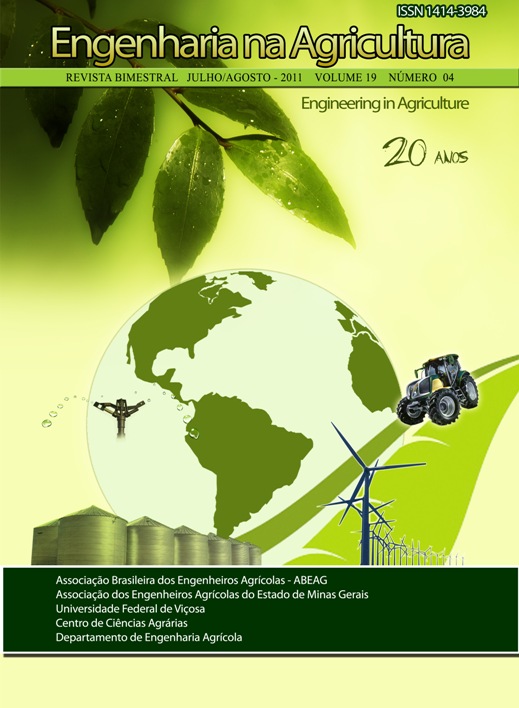MODELS TO ESTIMATE POTENTIAL YIELD OF BEANS AND MAIZE CROPS
DOI:
https://doi.org/10.13083/reveng.v19i4.218Keywords:
Modelo agrometeorológico, balanço de carbono, estimativa de produtividadeAbstract
Climate has significant impact on crop growth and development, and several agro-meteorological models have been used for its quantification. Considering the importance of simple models capable of considering effects of various factors on yield potential, and the absences of data regarding there application under tropical conditions, this work was done to calculate and compare the potential yield of bean and maize crops in the mesoregions of Minas Gerais State. Using daily meteorological data from 1975 to 2004, some process-based models such as Blackman’s equation, the negative exponential, rectangular hyperbole, non-rectangular hyperbole, and the efficient radiation use, were used as the central part to calculate carbon balance in order to estimate yield variability of maize and bean crops. The percent difference between the model predicting highest and the lowest estimates was 105% for bean and 108% for maize crops. The potential yield estimated by these models differed significantly, indicating criteria based choice of the model to be used.Downloads
Downloads
Published
How to Cite
Issue
Section
License
Authors who publish with this journal agree to the following terms:
The author(s) authorize(s) the publication of the text in the journal;
The author(s) ensure(s) that the contribution is original and unpublished and that it is not in the process of evaluation by another journal;
The journal is not responsible for the views, ideas and concepts presented in articles, and these are the sole responsibility of the author(s);
The publishers reserve the right to make textual adjustments and adapt texts to meet with publication standards.
From submission, the author is fully conceding the paper's patrimonial rights to the publication, but retaining the owner of its moral rights (authorship and paper's identification) according to Creative Commons Attribution-Noncommercial.








 Licensed by
Licensed by 